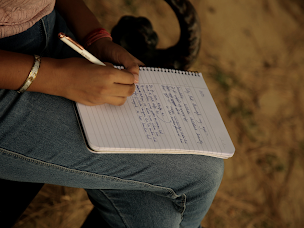Ramayana: A Tapestry of Timeless Tales and Diverse Interpretations
The Ramayana, an ancient Sanskrit epic, is more than just a revered Hindu scripture. It transcends religious boundaries, weaving a spellbinding tale of love, loss, loyalty, and ultimate triumph that has captivated hearts for millennia. Its literary brilliance continues to shine even today, influencing countless writers and artists across the globe.
A Tapestry of Words:
Composed by the sage Valmiki, the Ramayana boasts a
staggering 24,000 verses divided into seven kandas (books). It masterfully
employs literary devices like metaphors, similes, and imagery, painting vivid
pictures in the reader's mind. The epic's rhythmic verses, rich descriptions,
and captivating storytelling ensure a truly immersive experience.
A Moral Compass:
Beyond its captivating plot, the Ramayana serves as
a moral compass, offering timeless lessons on righteousness, duty, and
perseverance. The characters, both divine and human, embody virtues like dharma
(righteousness), bhakti (devotion), and त्याग (sacrifice).
Their choices and consequences provide valuable insights into navigating life's
complexities.
The 7 Gems of Ramayana:
The Ramayana's brilliance extends beyond its
original Sanskrit form. Over centuries, countless retellings have emerged, each
adding unique flavors and interpretations. Here are seven of the most popular
versions, each a testament to the epic's enduring legacy:
1. Valmiki Ramayana:
The original Ramayana, attributed to the sage Valmiki, is the oldest and
most authoritative version. It consists of approximately 24,000 Sanskrit verses
and is divided into seven chapters or Khandas.
2. Tulsidas’ Ramcharitmanas:
Ramacharitmanas means ‘Lake of the deeds of Lord Rama’. Written by the medieval saint and poet Tulsidas in the Awadhi language, the Ramcharitmanas is a highly popular version widely read and revered in North India and is known for its devotional and lyrical qualities.
3. Kamban Ramayana:
Authored by the Tamil poet Kamban in the 12th century, Ramavataram is an
epic retelling of the Ramayana in the Tamil language. Kamban's version is
celebrated for its poetic beauty and is highly regarded in South India.
4. Ezhuthachan's Adhyatma Ramayana:
Adhyatma Ramayana, written by the Malayalam poet Thunchaththu Ramanujan Ezhuthachan, is a Malayalam adaptation of the Valmiki Ramayana. It is considered a classic in Malayalam literature.
5. Ranganatha Ramayanam:
Ranganatha Ramayanam is a version of the Ramayana in Telugu, authored by the 15th-century poet Ranganatha. It is known for its linguistic richness and has had a significant cultural impact in the Telugu-speaking regions.
6. Bhavarth Ramayan:
Bhavarth Ramayan, composed by Eknath in the 16th century, is a Marathi version of the Ramayana. Eknath's rendition is notable for its simplicity and accessibility, making it widely read in Maharashtra.7. Kuvempu’S Ramayana Darshanam:
"Ramayana Darshanam" by Kuvempu is a profound Kannada poetic work, providing a contemporary reinterpretation of Valmiki's Ramayana with a focus on philosophical insights and moral dilemmas faced by the characters. Kuvempu's humanistic approach adds depth to this timeless epic.










Comments